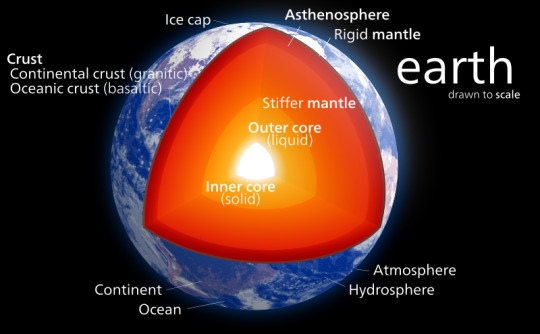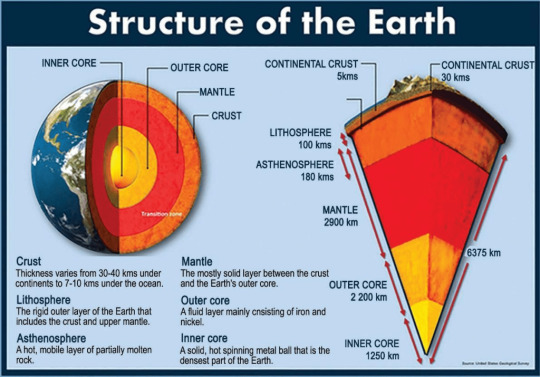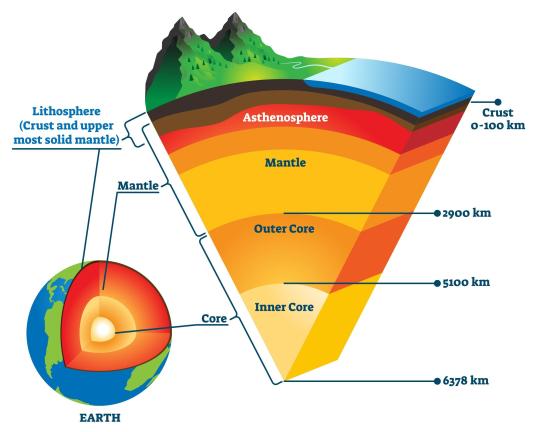#flowables
Explore tagged Tumblr posts
Text
I wanna have a dragon but like a dog. A dog-dragon? It's a giant dog with wings and it breathes fire. So basically a dragon but not the lizard but a dog....
I can't stop putting my old small toys on my dogs and wonder how cool they would look if these were dog-dragons...
3 notes
·
View notes
Text
i may never get my forklift certification but surely once i get my commercial pesticide applicator's license the women will flock to me in droves
#i have driven a forklift btw. just not certified. osha don't @ me#anyway. ask me abt the difference between wettable powders and dry flowables
3 notes
·
View notes
Text
Flowable 6.7.2 editor
download version 6.7.2 https://github.com/flowable/flowable-engine/releases/tag/flowable-6.7.2
unzip and go to wars folder and confirm flowable-ui.war is present
run in cmd prompt > java -jar flowable-ui.war
for specific port > java -Dserver.port=8888 -jar flowable-ui.war
check startup logs success and port (usually 8080 unless specific)
access ui in browser http://localhost:8080/flowable-ui
user/pwd is admin/test
reference https://medium.com/@prawin609/getting-started-with-flowable-installation-and-ui-access-a225e032f776
0 notes
Link
Discover the brewing game-changer with DynaBoost flowable hop extract no hot water bath! Say goodbye to T-90 pellets and hello to enhanced beer aroma, greater efficiency, and cost savings. Elevate your brewing experience now with this innovative solution. Read more on Brew Scoop. Cheers to better brews!
0 notes
Text

Wisdom TC Insecticide for Effective & Affordable Pest Control
Experience effective pest control with wisdom tc Insecticide. Our potent formula safeguards against pests, ensuring lasting protection. Choose a reliable and affordable solution for a pest-free environment with wisdom tc from OurProSolutions.
0 notes
Text
Revolutionizing Construction: Unveiling the Latest Breakthroughs in Concrete Admixtures
Introduction:
As the construction industry continues to evolve, innovation plays a crucial role in driving progress and shaping the future. Among the many advancements that have revolutionized the field, concrete admixtures stand out as a game-changer. These additives, when incorporated into cement mixtures, offer enhanced performance, durability, and sustainability, making them indispensable in modern construction practices. In this guest post, we will explore the latest advancements in concrete admixtures and how Ressichem, a leading manufacturer of building and construction materials, is at the forefront of this transformative journey.
Understanding Concrete Admixtures:
Concrete admixtures are chemical formulations added to concrete or cement mixtures to modify their properties and enhance performance. They are primarily used to improve workability, strength, durability, and curing time. By fine-tuning the composition of concrete, admixtures allow for greater flexibility and customization, meeting the diverse demands of various construction projects.
Enhancing Workability and Flowability:
Ressichem has been instrumental in developing cutting-edge concrete admixtures that significantly enhance the workability and flowability of cement mixtures. With the incorporation of high-range water reducers, commonly known as superplasticizers, the viscosity and slump of concrete can be adjusted to suit specific construction requirements. This results in easier placement, reduced labor, and improved finishing, leading to substantial time and cost savings.
Improving Strength and Durability:
Concrete admixtures have opened up new avenues for enhancing the strength and durability of concrete structures. Ressichem's innovative cement admixture solutions, such as high-performance water-reducing agents and pozzolanic materials, enable the production of high-strength concrete with reduced water-cement ratios. This not only improves the compressive strength but also increases resistance to chemical attacks, weathering, and abrasion, resulting in longer-lasting and more resilient structures.
Promoting Sustainability and Environmental Responsibility:
As sustainability becomes a key focus in the construction industry, Ressichem recognizes the importance of eco-friendly solutions. Through extensive research and development, the company has formulated concrete admixtures that contribute to reducing environmental impact. These include admixtures that incorporate industrial by-products like fly ash and slag, which enhance the workability and strength of concrete while reducing the consumption of natural resources and lowering carbon emissions.
Meeting Specialized Construction Needs:
The evolving construction landscape demands specialized solutions to address unique challenges. Ressichem's concrete admixture portfolio includes a range of products designed for specific applications. From self-leveling and self-compacting concrete to underwater concreting and corrosion inhibition, their offerings cater to a wide array of construction requirements, ensuring optimal performance and long-term sustainability.
Conclusion:
Concrete admixtures have ushered in a new era of innovation in the construction industry, offering remarkable advancements in workability, strength, durability, and sustainability. Ressichem, with its state-of-the-art manufacturing facility and commitment to research and development, has emerged as a leading player in this domain. By continuously pushing the boundaries of concrete technology, Ressichem is contributing to the development of safer, more efficient, and environmentally conscious construction practices. As the industry continues to evolve, concrete admixtures will undoubtedly play a pivotal role in shaping a sustainable and resilient future for construction projects worldwide.
#Concrete Admixtures#cement admixture#Ressichem#innovation#construction materials#breakthroughs#workability#flowability#strength#durability#sustainability#eco-friendly solutions#specialized construction needs
0 notes
Text

Inktober 14 the world of Discus Launch Gliders the flowable throwable thermal glidems

©flitetest
youtube
91 notes
·
View notes
Text
The Earth Structure .
The Earth's structure is composed of several layers: the crust, mantle, outer core, and inner core. The crust is the outermost layer, a thin, rocky shell, while the mantle is a thick, semi-solid layer beneath the crust. The core is the innermost layer, divided into a liquid outer core and a solid inner core.


Detailed Breakdown:
Crust: The outermost solid layer, composed of continental and oceanic crust.
Mantle: A thick, semi-solid layer beneath the crust, further divided into the lithosphere and asthenosphere.
Outer Core: A liquid layer surrounding the inner core, primarily composed of iron and nickel.
Inner Core: The innermost layer, a solid sphere composed mainly of iron and nickel.



Additional Layers and Concepts:
Lithosphere: The rigid outer layer, composed of the crust and the uppermost part of the mantle.
Asthenosphere: The layer below the lithosphere, a more plastic, flowable layer.
Mohorovicic Discontinuity (Moho): The boundary between the crust and the mantle.
#photochallenge #everyoneシ゚ #science #knowledge #spacescience #astronomy #education #physics #Educational #sun #earth #astrology #astronaut #astrophysics #NASA #uk #spaceexploration #university #college #school #spaceshuttle #astrophotography #spacescience #ecology #ecofriendly #ecolife #nature #weather #solarpower #solarenergy #energy #fb #goodmorning #apple #iphone #Samsung #Sony #japan #time #writing
#positivity#quotes#writing#astro community#astrology#astronomy#books#collage#home & lifestyle#knowledge#school#science#writers and poets#writers on tumblr#info#books & libraries#learning#literature#university#united states#words#ecology#economy#socialism#oxford#harvard#space#spain#uk#russia
5 notes
·
View notes
Text
oh to engage in the most deepest intellectualest flowable skull-session with a stranger. it's not every day you connect with someone & pick their brain while they do so with yours. i need that, need it respectful & chill to the point where we become acquaintances that ask/pick at the other’s brain whenever we talk. when god, when will it be me ?
#random#conversations#send asks#ask me anything#ask me questions#let’s be friends#4am thoughts#4 am ramblings#i wrote this at 4am#4am posting#be my mutual#be my friend#let’s talk#let’s be mutuals#letsconnect#bored#talk to me#lgbtq community#lgbt nsft#ftm nsft#transmasculine
15 notes
·
View notes
Text
Unlocking the Power of Calcium Carbonate and Starch Granules in Pharmaceutical Formulations
Unleashing the Power of Purity: Calcium Carbonate and Starch Granules from Amrose Lifescience LLP
In the ever-evolving pharmaceutical industry, the demand for high-quality excipients is paramount. Amrose Lifescience LLP, a leading manufacturer based in Ahmedabad, India, offers premium Calcium Carbonate & Starch Granules that meet the stringent requirements of the pharmaceutical and nutraceutical sectors. Our commitment to innovation and quality drives us to continuously improve our offerings and stay at the cutting edge of technology.

Pharma-Grade Granules that Deliver: The Amrose Lifescience Commitment
Key Features:
High Purity: Crafted from ultra-pure raw materials to guarantee exceptional quality, safety, and consistency
Excellent Flow Properties: Engineered for superior flowability, enabling smooth processing and reducing production delays.
Exceptional Compressibility: Improves tablet formation by ensuring strong, uniform compacts with optimal mechanical strength
Flexible Formulations: Specifically developed to align with unique client needs across a wide range of applications
Through advanced manufacturing techniques and rigorous quality control protocols, we ensure our granules consistently meet the highest industry benchmarks. Our focus is on providing dependable, high-performance excipients that optimize pharmaceutical and nutraceutical formulations.
The Future of Excipient Innovation: Calcium Carbonate and Starch Granules Combined
Amrose Lifescience LLP is dedicated to upholding the highest standards of quality and safety in every product we deliver. Our Calcium Carbonate and Starch Granules are manufactured in cutting-edge facilities, strictly following Good Manufacturing Practices (GMP) and regulatory protocols. Each batch undergoes thorough quality checks to ensure consistent, reliable performance you can depend on.
2 notes
·
View notes
Text
How pour point depressants improve oil flow in cold conditions
The global oil and gas industry faces numerous challenges when operating in extreme weather conditions. One such issue is the formation of wax crystals in crude oil and petroleum products at low temperatures, which hinders flow and transportation. This is where pour point depressants (PPDs) play a crucial role. Designed to enhance oil flow by lowering its pour point, PPDs are an indispensable solution for cold environments.

As a leading pour point depressant manufacturer in India, Imperial Oilfield Chemicals Private Limited specializes in providing high-performance solutions that ensure smooth oil transport even in freezing conditions. This blog explores the importance of pour point depressants, how they work, and why choosing the right supplier is essential for oilfield operations.
Understanding the Role of Pour Point Depressants
Crude oil contains wax molecules that tend to crystallize when exposed to low temperatures. These wax crystals form a network, increasing oil viscosity and obstructing its flow. The pour point is the lowest temperature at which oil remains fluid before becoming solidified.
A pour point depressant modifies the crystallization behavior of wax molecules, preventing them from aggregating into larger clusters. This ensures the oil remains pumpable even in cold conditions, thereby reducing operational downtime and maintenance costs.
How Do Pour Point Depressants Work?
Pour point depressants act as flow improvers by modifying the size and shape of wax crystals in crude oil. Their mechanism involves:
Wax Crystal Modification – PPDs interact with paraffin molecules, disrupting their regular structure and preventing the formation of large, interlocking networks.
Dispersion Effect – They disperse wax molecules evenly throughout the oil, reducing their ability to form solid masses.
Lowering Pour Point – By inhibiting the solidification process, PPDs help lower the temperature at which oil remains fluid, improving flowability.
These mechanisms make PPDs indispensable for regions where temperatures plummet, ensuring a seamless oil supply chain.
Benefits of Using Pour Point Depressants
Companies in the oil and gas sector benefit significantly from using pour point depressants, particularly in extreme weather conditions. Some of the major advantages include:
1. Improved Oil Flowability
PPDs enhance the flow properties of crude oil and refined products, preventing blockages in pipelines and storage tanks.
2. Reduced Operational Costs
By preventing wax deposition, PPDs minimize the need for frequent maintenance, reducing energy consumption and maintenance costs.
3. Enhanced Pipeline Efficiency
Ensuring smooth oil transportation reduces pumping pressure and extends the lifespan of pipelines.
4. Prevention of Equipment Damage
Cold conditions can lead to the accumulation of wax deposits in pumps, valves, and storage tanks, causing mechanical failures. PPDs mitigate this risk, ensuring equipment longevity.
5. Eco-Friendly Solution
Using PPDs reduces the need for thermal heating in pipelines, decreasing energy consumption and carbon emissions.
Industries That Benefit from Pour Point Depressants
Several industries rely on pour point depressants to maintain efficiency in cold environments:
Oil & Gas Exploration – Ensuring crude oil remains pumpable during extraction and transportation.
Petroleum Refining – Enhancing the flow of refined products such as diesel and lubricants.
Pipeline Transportation – Reducing blockages and enhancing efficiency in long-distance oil transport.
Fuel Storage & Distribution – Preventing fuel solidification in storage tanks during winter.
Choosing the Right Pour Point Depressant Supplier in India
Selecting a reliable pour point depressant supplier in India is crucial to ensuring the efficiency and performance of your oilfield operations. Here is why Imperial Oilfield Chemicals Private Limited stands out:
High-Quality Products – As a trusted oilfield chemicals manufacturer and exporter in India, we provide advanced chemical formulations that deliver optimal performance in extreme conditions.
Global Reach – Recognized as a pour point depressant exporter in India, we serve clients worldwide, ensuring smooth and uninterrupted oil flow in different climates.
Customized Solutions – Our team of experts develops tailored solutions to meet the specific requirements of different crude oil compositions.
Commitment to Excellence – As the best oilfield chemicals company in Gujarat, we prioritize quality, innovation, and customer satisfaction.
Why Choose Imperial Oilfield Chemicals Private Limited?
Being the best oilfield chemical products provider in the world, Imperial Oilfield Chemicals Private Limited is dedicated to delivering superior solutions for the oil and gas industry. Here is why clients trust us:
State-of-the-Art Manufacturing – Our advanced production facilities ensure high-purity and effective chemical solutions.
Stringent Quality Control – We adhere to international quality standards, ensuring consistency and reliability.
Strong Customer Support – Our dedicated team offers expert guidance to help clients optimize their oilfield operations.
Conclusion
Pour point depressants are a game-changer in ensuring smooth oil flow in cold conditions. By preventing wax crystallization, they enhance pipeline efficiency, reduce maintenance costs, and improve overall operational efficiency.
As a leading oilfield chemicals exporter Gujarat, Imperial Oilfield Chemicals Private Limited takes pride in offering high-quality pour point depressants that meet global industry standards. Whether you need a reliable pour point depressant manufacturer in India or a pour point depressant supplier in India, we have the expertise and technology to deliver the best solutions for your oilfield needs.
For more information on our products and services, contact us today!
#Pour point depressant manufacturer in India#Pour point depressant exporter in India#Pour point depressant supplier in India
4 notes
·
View notes
Text
Yakima Chief Hops (YCH) and India Hops collaborate to release Strata HyperBoost.
https://bit.ly/4gmoWM9 image courtesy Yakima Chief Hops (YCH) Press Release YAKIMA, WA … Yakima Chief Hops (YCH), a global leader in innovation, has joined forces with Oregon-based Indie Hops to introduce a new offering to brewers: Strata® HyperBoost™. This marks the first collaboration between the two hop suppliers, combining Indie’s well-known and much-loved Strata variety with YCH’s cutting-edge HyperBoost formula, an exclusive flowable hop extract only from YCH. “Indie Hops has always approached customers with a mutual interest in making great beer, so it’s natural that Indie Hops and Yakima Chief Hops have entered into a product collaboration to bring brewers the first Strata HyperBoost,” said Ryan Hopkins, CEO of Yakima Chief Hops. “Indie has been a great partner to the brewing industry in developing hop varieties that bring new and unique flavors to brewers, and they’ve always been a strong advocate for family-owned and operated farms.” Indie Hops CEO Jim Solberg shared his enthusiasm for the project, stating, “Collaboration is a big deal between craft brewers and can be a good thing between hop suppliers as well. We’re stoked to be collaborating with YCH to pair our standout variety Strata with their exciting new cold-side flowable HyperBoost. It’s good for us, good for YCH, and great for brewers!” Strata, celebrated for its unique aroma profile of passion fruit, grapefruit, strawberry, and wafting cannabis, has become a favorite among modern brewers. Now, with HyperBoost’s concentrated oil formula, brewers can effortlessly incorporate Strata’s flavor profile into beer. Designed for maximum efficiency, HyperBoost simplifies the brewing process by allowing brewers to pour the product directly into fermenters, with no additional preparations. YCH’s Research and Development team created HyperBoost in response to brewers' demand to have a highly flowable, concentrated hop product, that would enhance beer flavor and aroma with true-to-style hop attributes. Brewers using HyperBoost have reported significant gains in beer yield, with some achieving increases of up to 10%! HyperBoost can be used to replace a portion of the hop bill or as an addition to amplify the beer’s overall sensory impact. “There is a dizzying number of hop oil extracts in the market now. One key factor that attracted us to YCH HyperBoost for our variety Strata is that HyperBoost is derived solely from hops,” said Solberg. “Real hops grown by real people for brewers to excite customers who really like hoppy beer." Strata HyperBoost is an essential ingredient for brewers at the forefront of innovation, delivering remarkable flavor to beer enthusiasts. Available in limited quantities, Strata HyperBoost comes in 100g easy-to-pour bottles for seamless use, and is available from YCH or Indie Hops. To expand access to Strata’s remarkable characteristics, YCH will also offer Strata T90 pellets. For Strata HyperBoost and pellets, contact Indie Hops, your YCH sales representative, or order through the YCH customer portal. ### Yakima Chief Hops YCH is a 100% grower-owned global hop supplier with a mission to connect brewers with family hop farms. Operating for over 30 years, we have become leaders in innovation, quality, and customer service. We are a resource for brewers, providing industry-leading research and products. We are advocates of sustainability and meaningful social causes, working to support the communities around us. https://www.yakimachief.com/ from Northwest Beer Guide - News - The Northwest Beer Guide https://bit.ly/4gaxVjC
2 notes
·
View notes
Text
does anyone want to fill my wet-well with flowable fill
39 notes
·
View notes
Text
I maybe should've prioritized sorting, folding, & packing clothes before & above knickknacks, books, office supplies. Nailing a nerve so I'll remember next time moving house has to get sequenced into something flowable
7 notes
·
View notes
Text
my favorite bowls to have meals in:


don't be fooled by the "cereal" name, it's good for pastas and stews and soups and anything else that might be a little too flowable for a flat dinner plate. wide surface area lets things cool off quicker but also allows for maximum grated cheese distribution.
and the big bowl, my beloved, for when you want to be able to stir your food without overflowing and/or just want a nice big bowl of whatever.
(28 oz bowl is 6.25" wide, 3.0" high, the flat 15 oz bowl is 8.5" wide, 1.0" high. in comparison the regular 18 oz soup bowl is 6.25" wide, 2.0" high)
i don't know if they've ever been part if a typical set but I had to order them special from the Corelle website. well worth it tbh
I looove when food is in a bowl. Frequently plates are being brought out and I’m thinking this could’ve been a bowl meal but nobody gets it
101K notes
·
View notes
